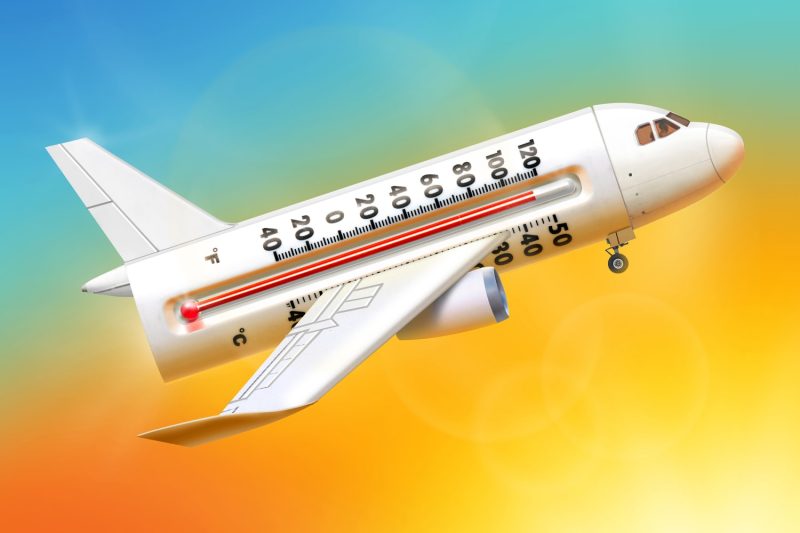Extreme heat is making flying harder, according to airlines and airports, but these key players in the aviation industry assert that they are not sweating over the challenges presented by rising temperatures. Extreme temperatures can have a significant impact on airline operations and airport infrastructure. Airlines face various operational challenges when temperatures soar, affecting flight schedules, aircraft performance, and passenger comfort.
One of the critical issues faced by airlines is reduced aircraft performance in hot weather. High temperatures can affect aircraft engines and limit the amount of weight that can be safely carried on a plane. This can lead to reduced takeoff performance, longer runways being required, and possibly the need to offload cargo or passengers to ensure safe operations. Airlines must carefully calculate the performance limitations of their aircraft in hot conditions to ensure safe and efficient flight operations.
Moreover, extreme heat can also impact the air density, affecting lift production and requiring higher airspeeds for takeoff and landing. Pilots need to be aware of these changes in aircraft performance and make adjustments to their flight operations to ensure the safety of the flight. Airlines may also need to make adjustments to their flight schedules to account for longer flight times and increased fuel consumption resulting from the reduced aircraft performance in hot weather.
Another challenge faced by airlines during extreme heat is the impact on passenger comfort. High temperatures can result in discomfort for passengers on board aircraft, especially during ground delays or extended taxiing. Airlines must take measures to ensure the well-being of their passengers by providing adequate ventilation and cooling systems on the aircraft and minimizing ground delays to prevent passengers from being exposed to excessive heat for prolonged periods.
In addition to airlines, airports also face challenges during extreme heat. High temperatures can impact airport infrastructure, such as runways, tarmacs, and terminal buildings. Asphalt runways and tarmacs can soften in extreme heat, affecting aircraft operations and requiring additional maintenance to ensure safe landings and takeoffs. Airport authorities must also take measures to counter the effects of extreme heat on terminal buildings and ensure the comfort of passengers and staff.
Despite these challenges, airlines and airports are prepared to handle the impacts of extreme heat on flight operations. Airlines have procedures in place to assess aircraft performance in hot weather and make necessary adjustments to ensure safe operations. Pilots receive training to handle the challenges posed by extreme heat and are equipped to make informed decisions during flight operations.
Airports also have measures in place to mitigate the impacts of extreme heat on infrastructure and ensure safe and efficient operations. Maintenance crews are prepared to address issues related to high temperatures and ensure that airport facilities are well-maintained and safe for aircraft operations.
In conclusion, extreme heat presents challenges for airlines and airports, impacting flight operations and airport infrastructure. However, airlines and airports are well-prepared to handle these challenges and ensure the safety and comfort of passengers during hot weather conditions. By implementing proactive measures and adapting to changing weather conditions, airlines and airports can continue to provide reliable and efficient services, even in the face of extreme heat.

